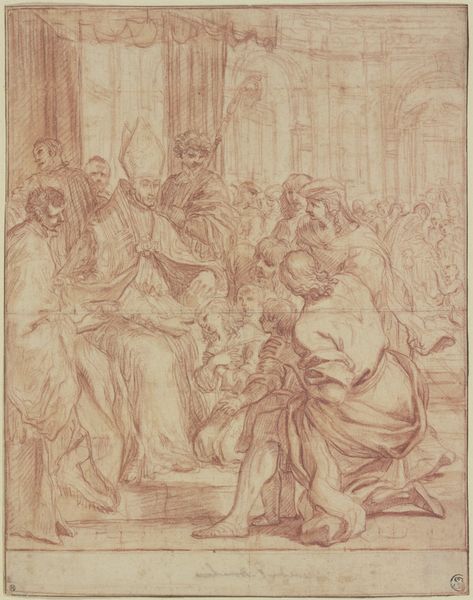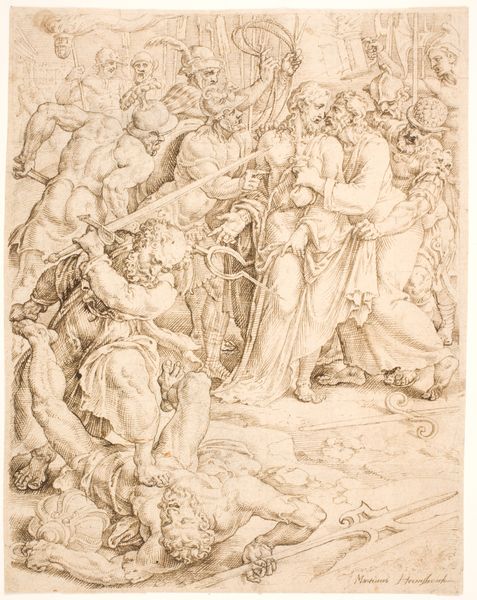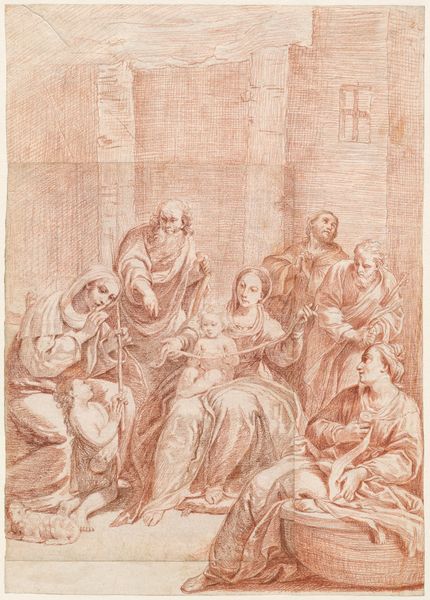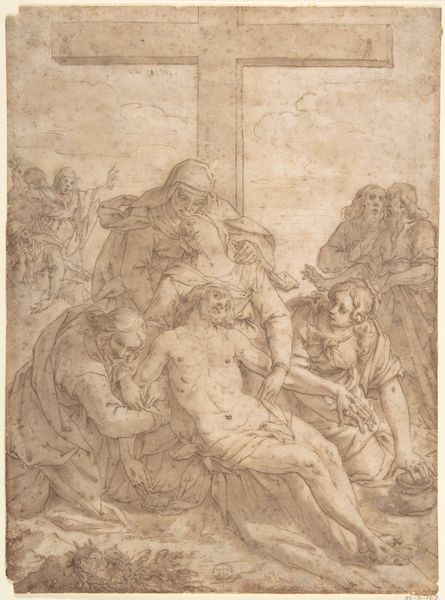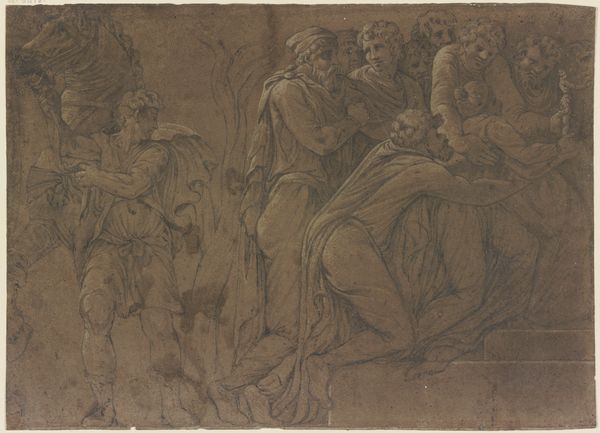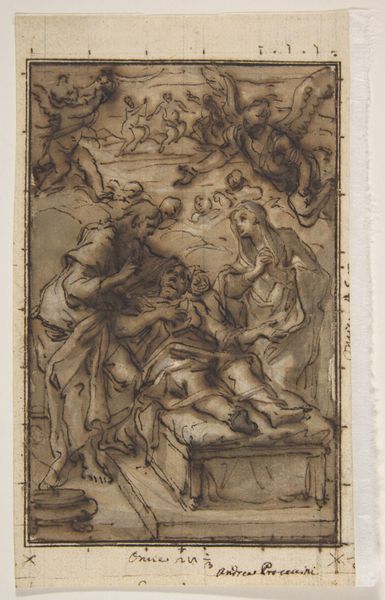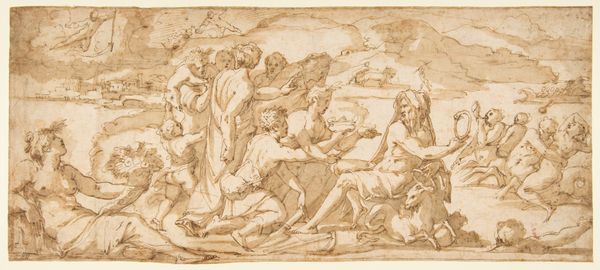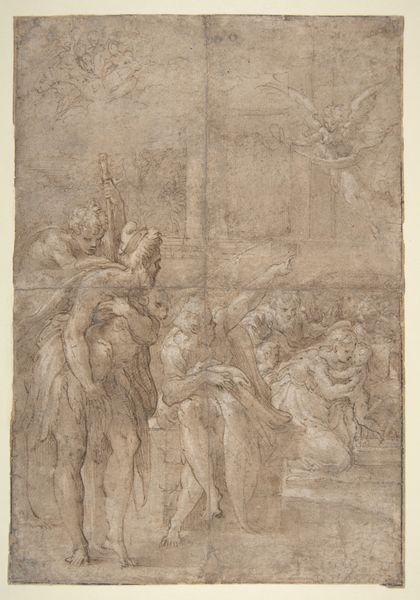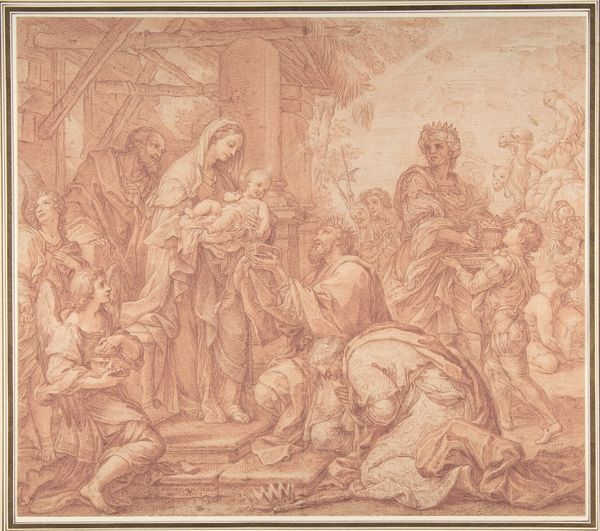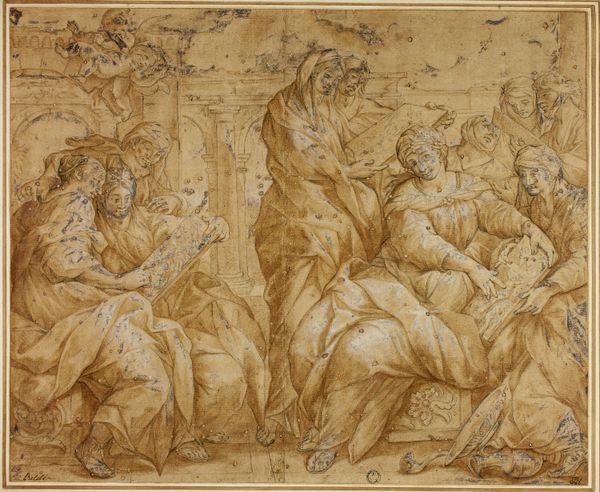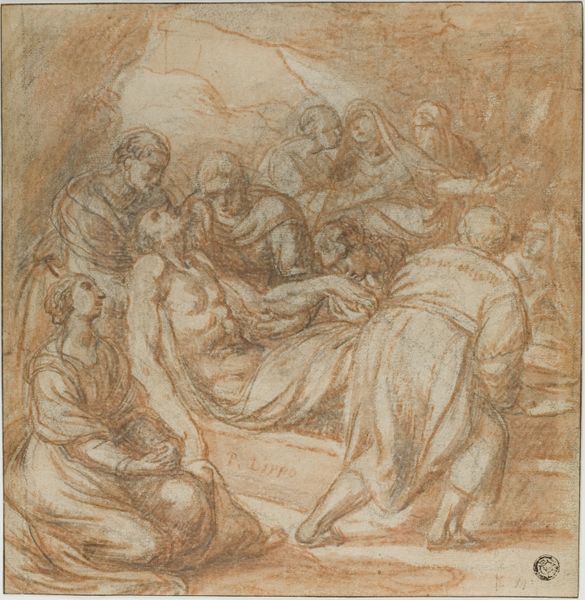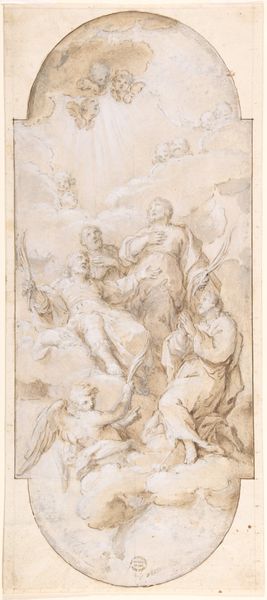
drawing, gouache, ink, pencil, chalk, charcoal
#
drawing
#
high-renaissance
#
toned paper
#
woman
#
animal
#
gouache
#
charcoal drawing
#
figuration
#
form
#
charcoal art
#
oil painting
#
ink
#
child
#
pencil
#
chalk
#
charcoal
#
history-painting
Copyright: Public Domain
Editor: We're looking at Parmigianino's "The Adoration of the Magi," made around 1527 to 1530, a drawing combining chalk, charcoal, ink, gouache and pencil on toned paper, currently at the Städel Museum. I find its monochromatic palette surprisingly dynamic given the crowded composition. What stands out to you? Curator: It’s the institutional context surrounding High Renaissance art like this that grabs me. Think about it: religious imagery like “The Adoration” was not just a personal expression but served a crucial socio-political role. Powerful families and institutions commissioned these pieces to demonstrate their piety and, let's be honest, their power. Does knowing that shift your perception? Editor: It does make me wonder who specifically commissioned this piece, and what message they intended to convey beyond simple religious devotion. Curator: Exactly. It begs the question of how this artwork contributed to a wider visual and ideological landscape. Was it meant to solidify the patron’s status? Did it speak to contemporary theological debates? Look at the Magi themselves; their depiction is far from uniform. What do their varied expressions and postures tell us? Editor: I hadn't considered that the nuances in their portrayal might carry a political or social subtext. I initially viewed it purely through a religious lens, focused on the act of adoration. Curator: The beauty of art history is that it allows us to unpack those layers, revealing how art, even ostensibly religious art, functions within specific historical and social contexts. Think about the impact that pieces like these have and had in society at the time and how it impacted political opinions. Now you can clearly see why art is, in reality, much more than simple aesthetics and artistic prowess. Editor: I see it very differently now. The layers of context are now starting to reveal their relevance! Curator: Excellent. That’s exactly how an image moves from object to statement.
Comments
No comments
Be the first to comment and join the conversation on the ultimate creative platform.
